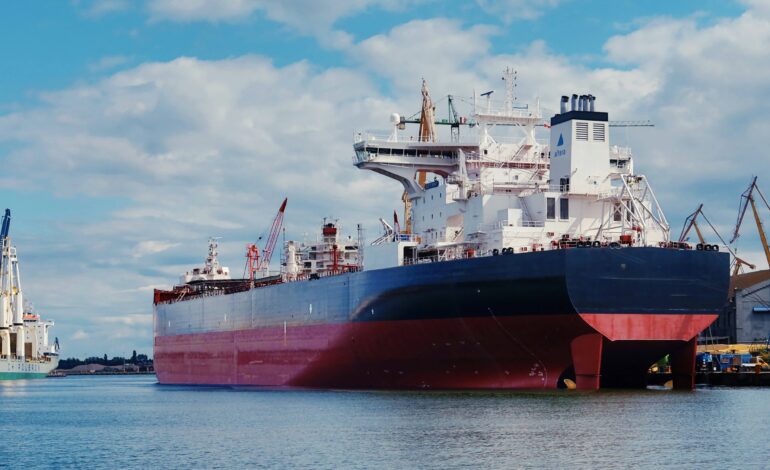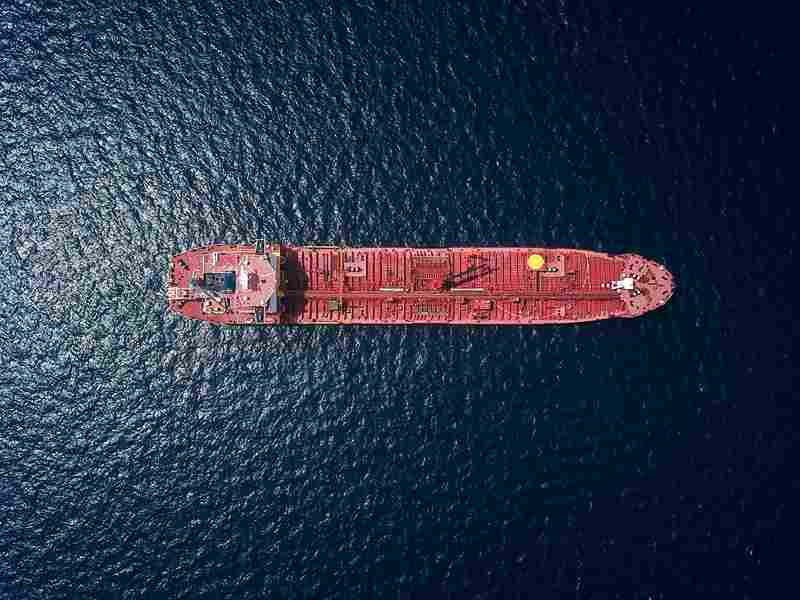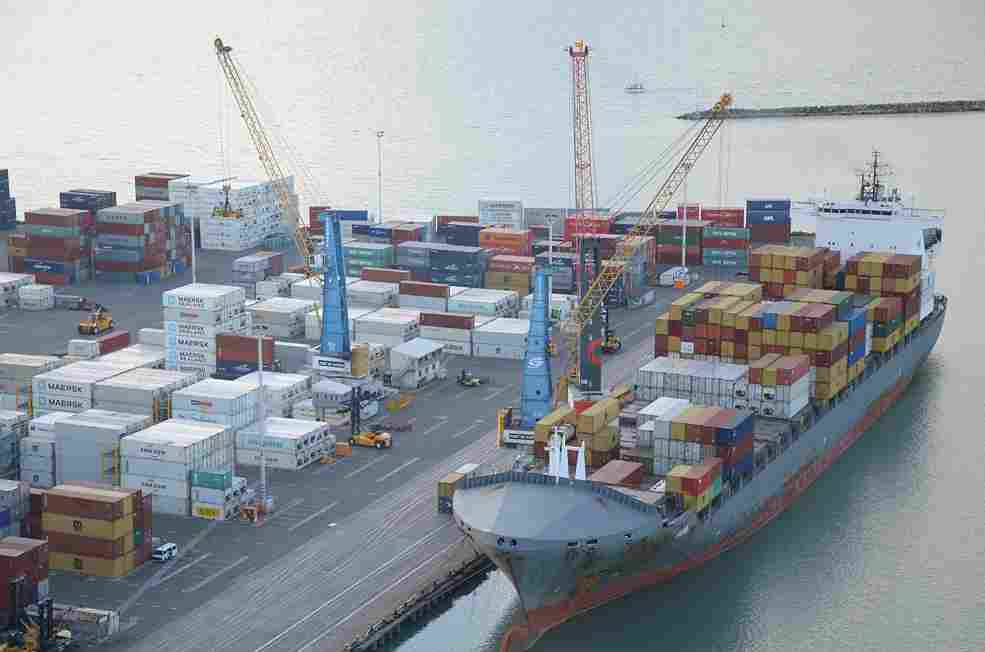
The Science Behind Bunker Fuel Emissions and Their Impact on Marine Air Quality
The global shipping industry plays an essential role in transporting goods across vast distances. However, this massive sector, which accounts for over 80% of global trade by volume, is also a significant contributor to air pollution. A key factor in this pollution is the type of fuel used to power the vessels—bunker fuel. While bunker fuel is critical to the functioning of the maritime industry, its combustion results in the release of a range of harmful pollutants, including sulfur oxides (SOx), nitrogen oxides (NOx), carbon dioxide (CO2), particulate matter (PM), and black carbon. These emissions contribute to the degradation of marine air quality and pose risks to both human health and the environment.
This article explores the science behind bunker fuel emissions, how they affect marine air quality, and the measures being taken to mitigate these impacts.
What is Bunker Fuel?
Bunker fuel refers to the petroleum-based fuel used to power ships. It is derived from crude oil and is a byproduct of the refining process. Bunker fuel comes in different types, the most common being heavy fuel oil (HFO), marine gas oil (MGO), and marine diesel oil (MDO). HFO is the cheapest and most commonly used fuel in the maritime industry due to its high energy density, but it contains a large amount of sulfur and other impurities, making it highly polluting.
Bunker fuel is used in large quantities due to the energy demands of large ships, which consume vast amounts of fuel for their operations. However, the high sulfur content and the incomplete combustion of bunker fuel result in the emission of a range of harmful pollutants, which have a detrimental impact on marine air quality and human health.
Emissions from Bunker Fuel
When bunker fuel is burned in a ship’s engine, a series of chemical reactions take place. These reactions release various pollutants into the atmosphere, some of which have a direct impact on air quality, while others contribute to global warming and climate change. Here’s a look at the primary pollutants released during the combustion of bunker fuel:
1. Sulfur Oxides (SOx)
One of the most significant pollutants emitted during the burning of bunker fuel is sulfur oxides (SOx), primarily sulfur dioxide (SO2). Sulfur is present in most bunker fuels, especially HFO, in concentrations that can exceed 2.5% by weight. When sulfur reacts with oxygen during combustion, it forms sulfur dioxide.
Sulfur dioxide is a major contributor to acid rain, which can damage ecosystems, soil, and water bodies. It also has a direct impact on marine air quality by contributing to fine particulate matter (PM2.5) and causing respiratory problems in humans. The burning of bunker fuel in ships results in the emission of millions of tons of sulfur dioxide every year, exacerbating the air quality issues in coastal areas and ports where shipping traffic is heavy.
2. Nitrogen Oxides (NOx)
Another major pollutant emitted from the combustion of bunker fuel is nitrogen oxides (NOx), which include nitrogen dioxide (NO2) and nitric oxide (NO). NOx are produced when the nitrogen in the air reacts with oxygen at high temperatures in the engine’s combustion chamber.
NOx emissions contribute to the formation of ground-level ozone, which is a major component of smog. They also play a role in the formation of particulate matter, which can lead to respiratory issues and other health problems. Furthermore, NOx emissions contribute to the acidification of the oceans, as they can react with water to form nitric acid, a key component of acid rain.
3. Carbon Dioxide (CO2)
Carbon dioxide is one of the most well-known greenhouse gases, and its emission is directly related to the burning of fossil fuels. Ships powered by bunker fuel release significant amounts of CO2 into the atmosphere. The global shipping industry is responsible for roughly 2-3% of global CO2 emissions, a figure that has been steadily increasing due to the growing demand for international shipping.
CO2 is a primary driver of climate change and global warming, contributing to the greenhouse effect and the heating of the planet. The shipping sector’s CO2 emissions, combined with other greenhouse gases from industrial sectors, contribute significantly to global climate change. Although international regulations like the Paris Agreement are pushing for reductions in CO2 emissions, the maritime industry has lagged behind in adopting comprehensive solutions.
4. Particulate Matter (PM)
Particulate matter (PM) refers to tiny particles suspended in the air, which can range in size from less than 10 microns (PM10) to less than 2.5 microns (PM2.5). These fine particles can be inhaled into the lungs, causing a variety of health problems such as asthma, lung cancer, and cardiovascular disease.
The combustion of bunker fuel releases a large amount of particulate matter, particularly from HFO, which is heavier and contains more impurities than cleaner fuels. These particles can contribute to poor air quality, particularly in port cities, where ships dock and are often at low speeds, emitting high concentrations of PM.
5. Black Carbon
Black carbon, a component of particulate matter, is produced during the incomplete combustion of fossil fuels, including bunker fuel. It is responsible for the dark color of soot and is a significant contributor to climate change. Black carbon absorbs sunlight and warms the atmosphere, which can accelerate the melting of ice in polar regions. It is also a major contributor to respiratory problems, including lung and heart disease, especially in areas with high shipping activity.
While black carbon is a short-lived climate pollutant compared to CO2, it has a disproportionately large impact on global warming, particularly in sensitive regions like the Arctic. The burning of high-sulfur bunker fuels, particularly in older ships with less efficient engines, contributes significantly to black carbon emissions.
Impact of Bunker Fuel Emissions on Marine Air Quality
The emissions from bunker fuel combustion have a profound impact on marine air quality, with consequences for both the environment and human health. The shipping industry’s emissions contribute to a range of air pollution problems that affect coastal communities and port cities around the world.
1. Health Risks for Coastal Communities
Air pollution from ships is a significant health risk for communities living near busy ports or shipping lanes. The emission of sulfur oxides, nitrogen oxides, particulate matter, and black carbon can have immediate and long-term health effects. People living near ports and shipping routes are exposed to higher concentrations of these pollutants, which can cause respiratory problems, cardiovascular diseases, and even premature death.
For example, studies have shown that residents living near ports have higher rates of asthma, bronchitis, and other respiratory illnesses. In addition, children and the elderly are particularly vulnerable to the health impacts of shipping emissions.
2. Contribution to Climate Change
Bunker fuel emissions also contribute to the broader problem of global climate change. Carbon dioxide, a greenhouse gas, is a major contributor to the greenhouse effect, which is causing the Earth’s temperature to rise. While the shipping industry contributes a relatively small percentage of global CO2 emissions, its emissions are growing rapidly as global trade increases.
In addition to CO2, black carbon from ships has a direct warming effect on the planet, particularly in sensitive areas like the Arctic. The presence of black carbon in the atmosphere accelerates the melting of ice and snow, contributing to rising sea levels and altering ecosystems. The combination of CO2 and black carbon emissions from shipping poses a serious challenge to global efforts to mitigate climate change.
3. Acidification of the Oceans
The sulfur dioxide emitted from ships reacts with water in the atmosphere to form sulfuric acid, which then falls to the Earth as acid rain. This acid rain can have a negative impact on marine ecosystems, particularly in coastal areas and estuaries. The acidification of the oceans, driven by SOx emissions, harms marine life, especially shell-forming organisms like corals, mollusks, and plankton, which are vital to the marine food web.
The increase in NOx emissions further exacerbates ocean acidification by contributing to the formation of nitric acid, which also lowers the pH of seawater. As the oceans become more acidic, marine biodiversity is threatened, and the ability of the oceans to absorb carbon dioxide is reduced.
Regulatory Measures to Reduce Bunker Fuel Emissions
Recognizing the harmful effects of bunker fuel emissions on air quality and the environment, international regulatory bodies such as the International Maritime Organization (IMO) have introduced a range of measures to curb pollution from the maritime sector.
1. IMO 2020 Sulfur Cap
The most significant regulation aimed at reducing shipping emissions is the IMO 2020 sulfur cap, which limits the sulfur content in marine fuels to 0.5% by weight, down from the previous limit of 3.5%. This regulation has forced the shipping industry to transition to low-sulfur fuels or invest in scrubbers to capture sulfur emissions. The reduction in sulfur emissions will significantly decrease the amount of sulfur dioxide released into the atmosphere, improving air quality in coastal areas and reducing acid rain.
2. Emission Control Areas (ECAs)
Emission Control Areas (ECAs) are regions where stricter emission standards are enforced to protect human health and the environment. These areas, which include certain coastal and port regions, impose limits on sulfur, nitrogen, and particulate emissions. Ships operating within ECAs are required to use fuels with lower sulfur content or install exhaust gas cleaning systems (scrubbers) to meet these standards.
3. Adoption of Alternative Fuels
The shipping industry is also exploring the use of alternative fuels to reduce its carbon footprint. Liquefied natural gas (LNG), hydrogen, ammonia, and biofuels are among the promising alternatives that produce fewer emissions compared to traditional bunker fuels. However, widespread adoption of these fuels will require significant investment in infrastructure and technology.
4. Energy Efficiency Measures
In addition to using cleaner fuels, shipping companies are adopting energy efficiency measures to reduce fuel consumption and, by extension, emissions. Techniques such as hull modifications, better route planning, and the use of wind and solar energy are helping to reduce the overall fuel consumption of ships.
Conclusion
Bunker fuel emissions are a significant contributor to the degradation of marine air quality, with far-reaching consequences for human health and the environment. The combustion of bunker fuel releases a wide range of pollutants, including sulfur oxides, nitrogen oxides, carbon dioxide, particulate matter, and black carbon, all of which pose serious risks to coastal communities and contribute to climate change and ocean acidification. However, with the implementation of regulations such as the IMO 2020 sulfur cap and the promotion of alternative fuels and energy efficiency measures, the shipping industry is taking steps to reduce its environmental impact. Continued innovation and international collaboration are essential to further mitigate the effects of bunker fuel emissions and improve marine air quality.





